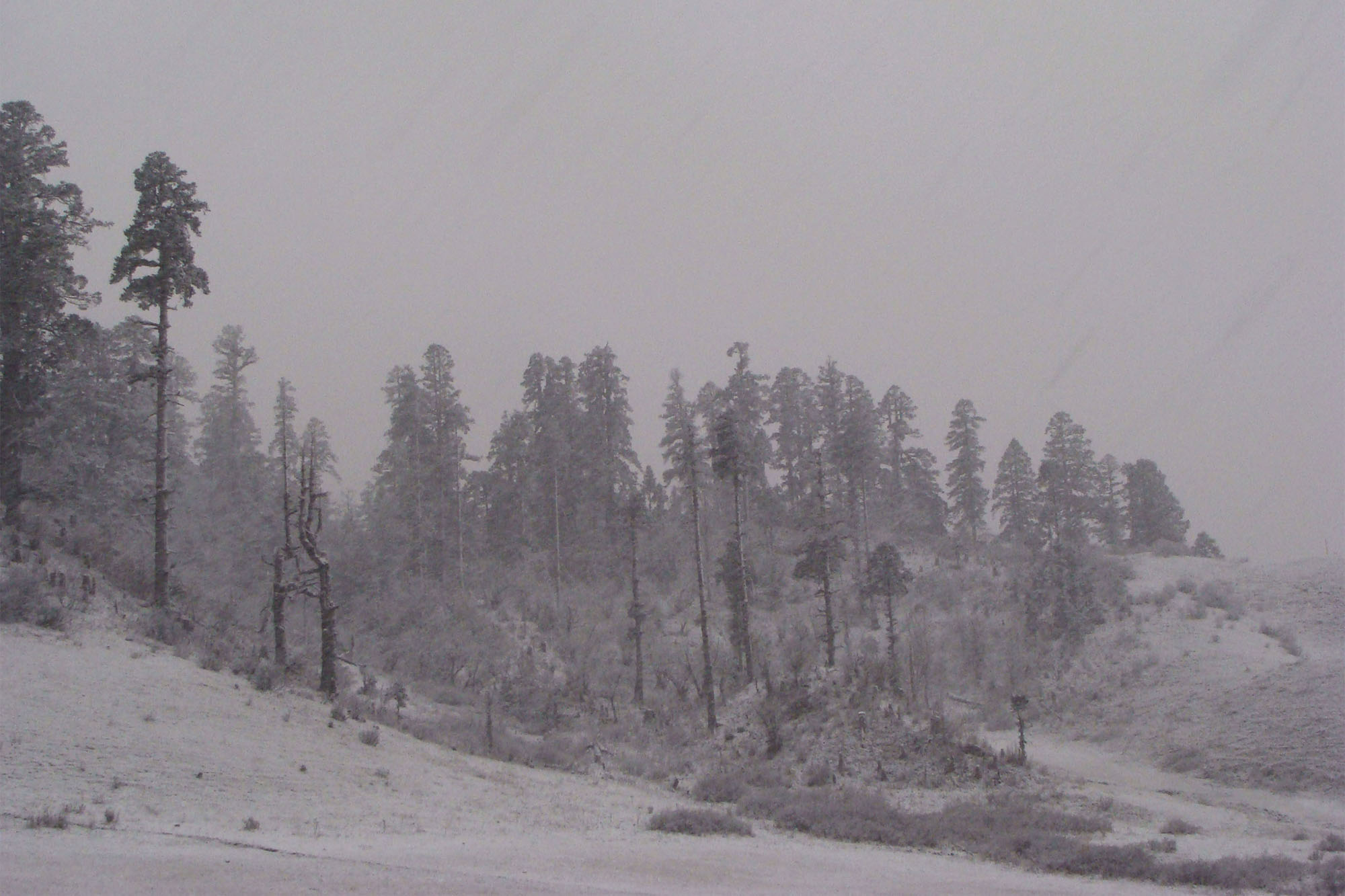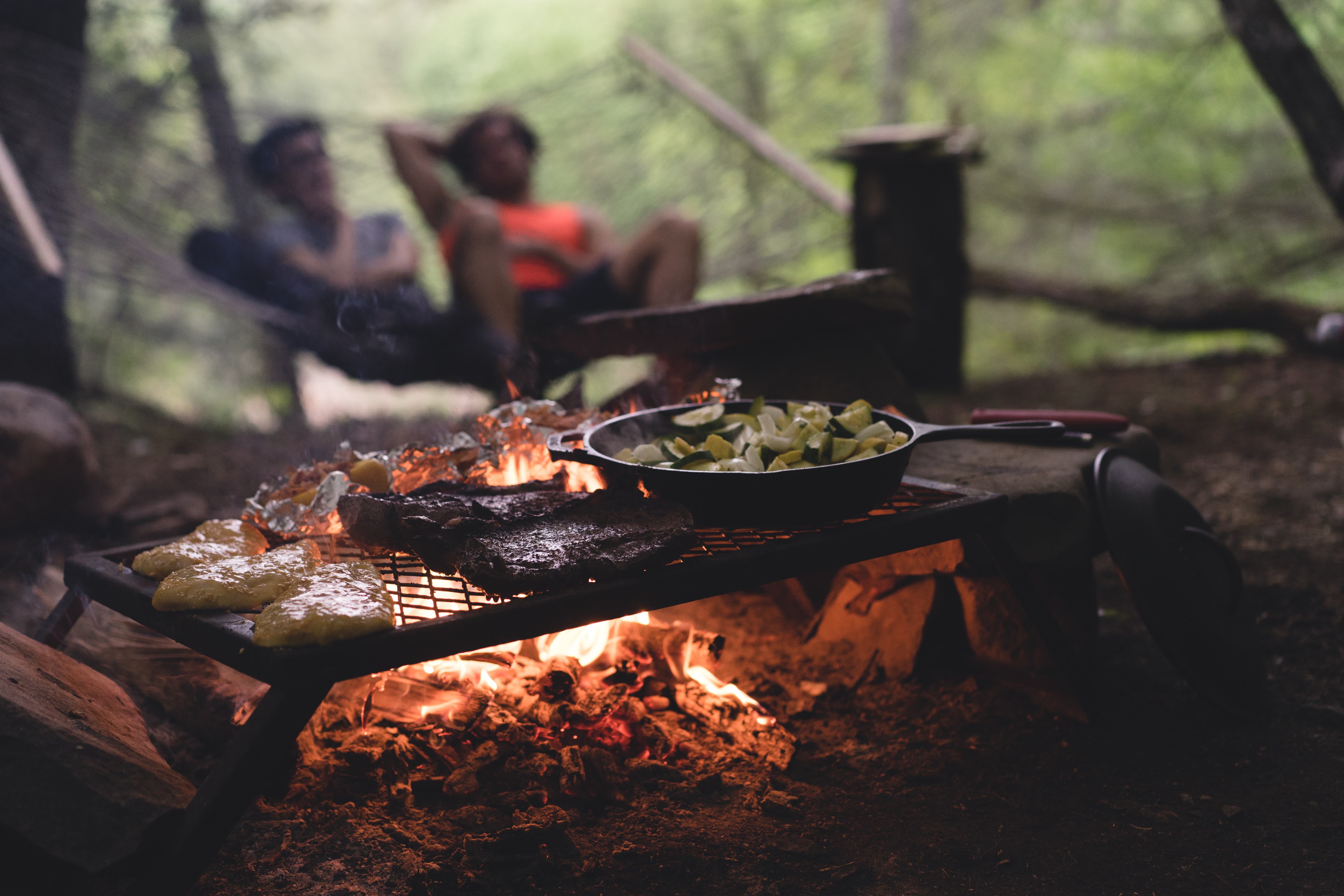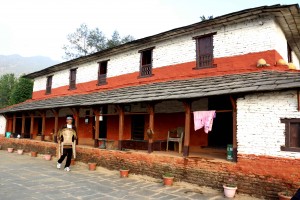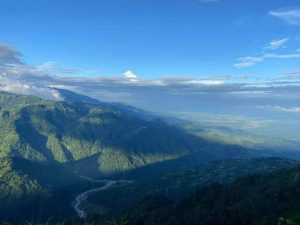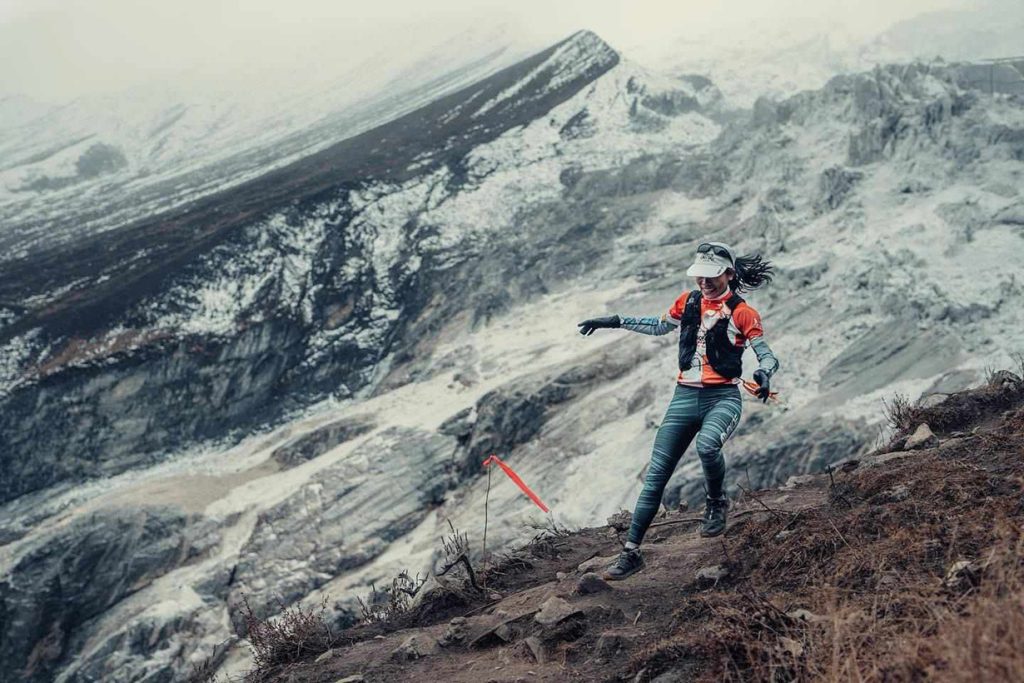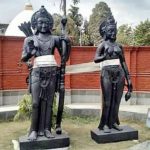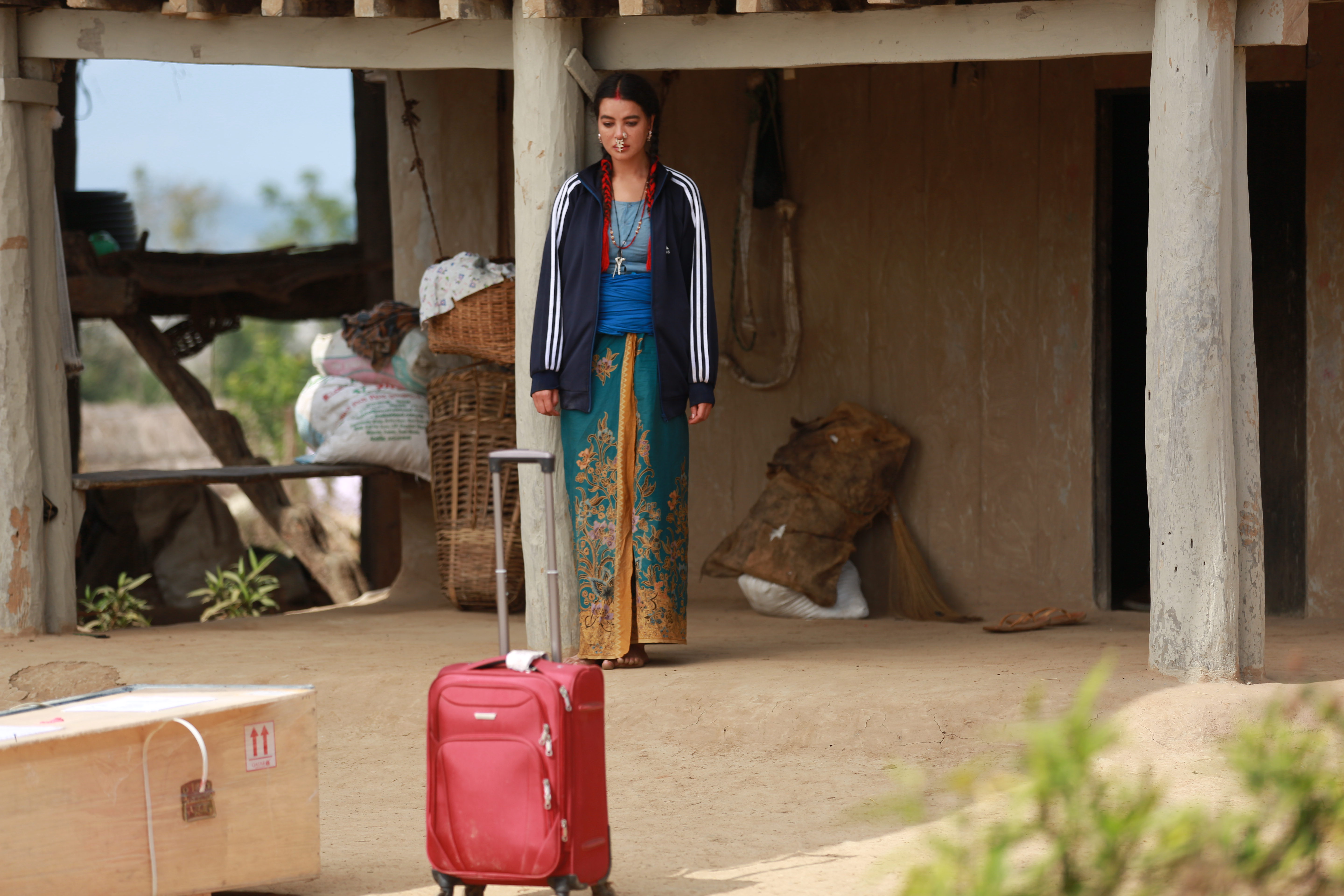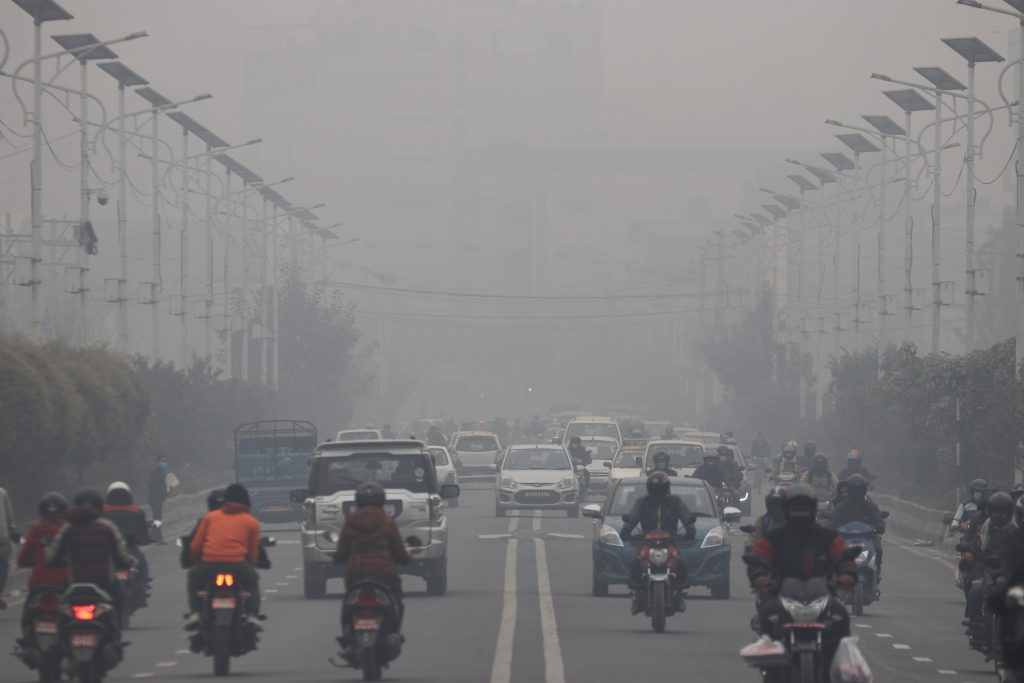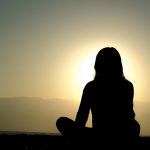A snowy landscape has an appeal that is hard to pin down. Is it the sense of uniformity that a place covered in a single color gives? Or perhaps the blanketing of the terrain by snow makes the landscape serene? Maybe it’s the emptiness: plants disappear; man and animals don’t venture out much.
But snow stirs emotions (or memories) in us that are hidden at other times. Some of us become playful when there is snow around. Here are some destinations that particularly appealing under the cover of snow.
1.
Phoolchoki
Photos: (Above) OnlineKhabar; (Opener) Author.
This is one of the few places (Shivapuri is the other) in the Kathmandu Valley that gets snow, although a miniscule amount. Snow remains on the northern side of the hill for a couple of days after snowfall. That gives ample time for Kathmanduites to rush to the hill to cavort in the snow. Snow only adds to the charms of this wilderness. The densely forested hill offers a wonderful day’s hike, with possible sightings of wildlife. Birdwatching is a rewarding experience here, with Nepal’s only endemic species, the Spiny Babbler, a resident here.
2.
Kalinchok
Photos: Author
Kalinchok after a snowfall is a lovely sight. Each wooden hut emits a plume of smoke, and the only colors are the yellow of the wood and the fluttering prayer flags in the middle of the village. The hill with the Kalinchok Bhagwati’s shrine towers over the tiny settlement. Hills surround the village on all sides, and under the cover of snow their slopes are irresistible. Clambering up the hill is not only done to slide down again; the scenery from the top is stunning.
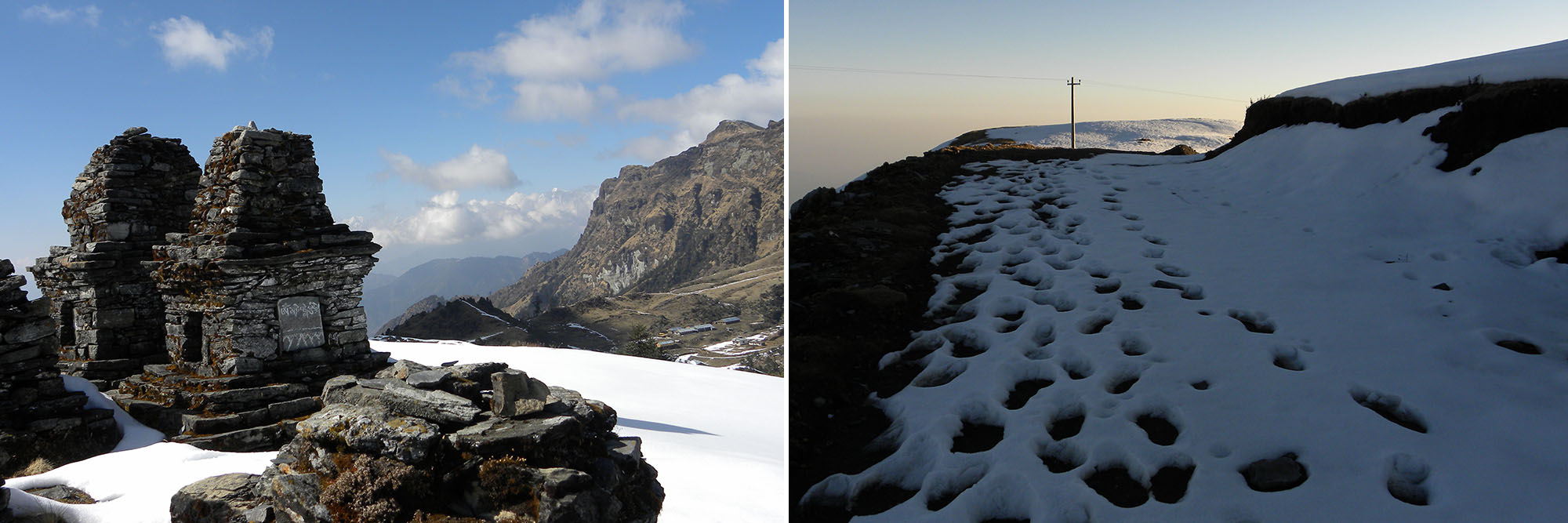
Unlike other, wilder destinations that receive ample snow, Kalinchok offers thrills at relatively lower risks. You would have to be pretty reckless and suicidal to lose your way in and around Kalinchok. If you stick to the prominent trails and avoid venturing too deep into the woods, there are some serene spots where you can enjoy your solitude. The forest northeast of the hamlet, on the dirt road that goes to the next village, is worth a visit.
Read also: Kuri: On Bear-Controlled Trails
You will also pass by the stone stupa-like commemorative structures built by the locals in memory of their ancestors. Brave winter’s freezing mornings to rise early to arrive there, and you will be rewarded with an unforgettable sunrise. The spot is equally good to visit in the afternoons, especially if you are the kind that likes to sit in the sun for a while and do nothing but stare at the silhouette of trees and clouds moving across Himalayan peaks.
3.
Poon Hill
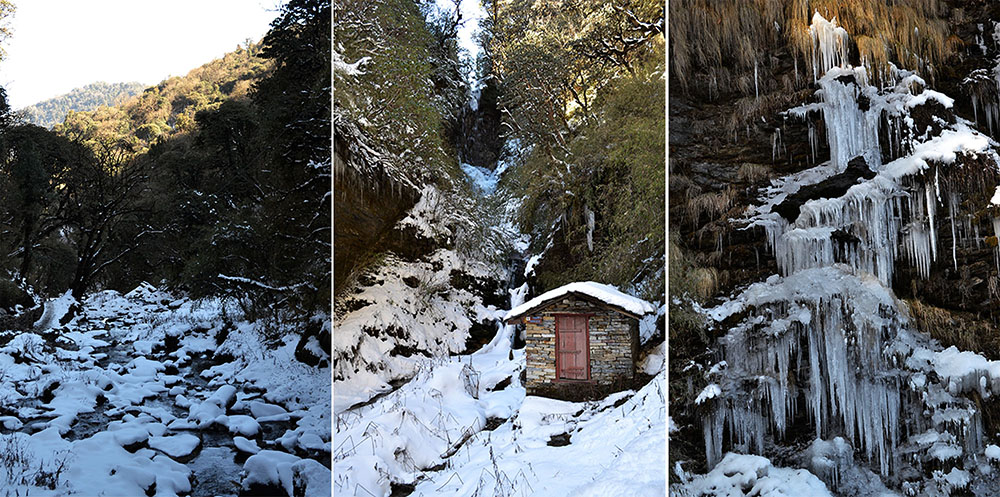
This is on almost every trekker’s bucket list, but rarely for the snow. In autumn and spring, Poon Hill becomes almost a pilgrimage site for trekkers, who come in their hundreds to shudder in the pre-dawn cold as they wait for the morning light to gild the mountains. When there is snow on the ground, this trek becomes a little risky, but it becomes significantly more enjoyable.
Read also: Chasing a Himalayan sunrise at Poon hill
The trail is covered in snow for the last third of the trek to Ghorepani, the village at the base of Poon Hill. Like in the trekking season, the highlight of the trip is standing at Poon Hill, surrounded by magnificent peaks. The difference of going in winter is you are likely to feel the iciness of the mountains on your face as a snow missile from your buddy finds its mark.
4.
Khaptad
Photos: Author
Khaptad National Park is a place of otherworldly quiet. A couple of hundred Nepal Army soldiers and a dozen or so park staffers live here year round. In winter, when sometimes seven to nine feet of snow falls, the place is virtually cut off from the world. Khaptad’s beauty is overwhelming, but getting there, especially in winter, is not easy.
Read also: Khaptad: A banquet for the senses
In the spring and autumn, it is a two-day – two long, arduous days – hike from Silgadi, the district headquarters of Doti. It’s almost impossible to get in during peak winter; to see snow, but without risking your life, you need to go either just as winter is setting in (late November) or toward winter’s end (February-March).
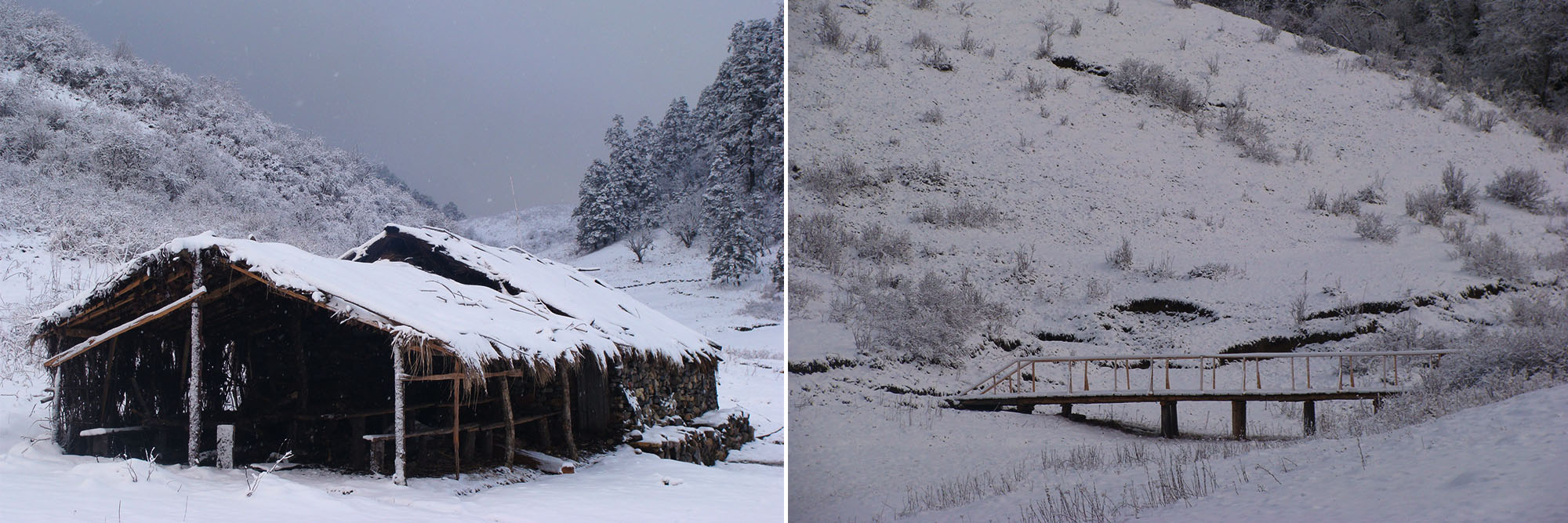
Logistics is also an issue here. There are no hotels or teahouses in Khaptad, so you need to somehow arrange to stay either at the army barracks or at the park employees’ quarters. Khaptad is arguably the wildest place in Nepal. This means beauty and danger in equal measure. You can saunter half a kilometer beyond the barracks in any direction and arrive in a place that is a century behind where you have come from. Wander away from the prominent trails and you could lose your way within minutes in the dense forests.





